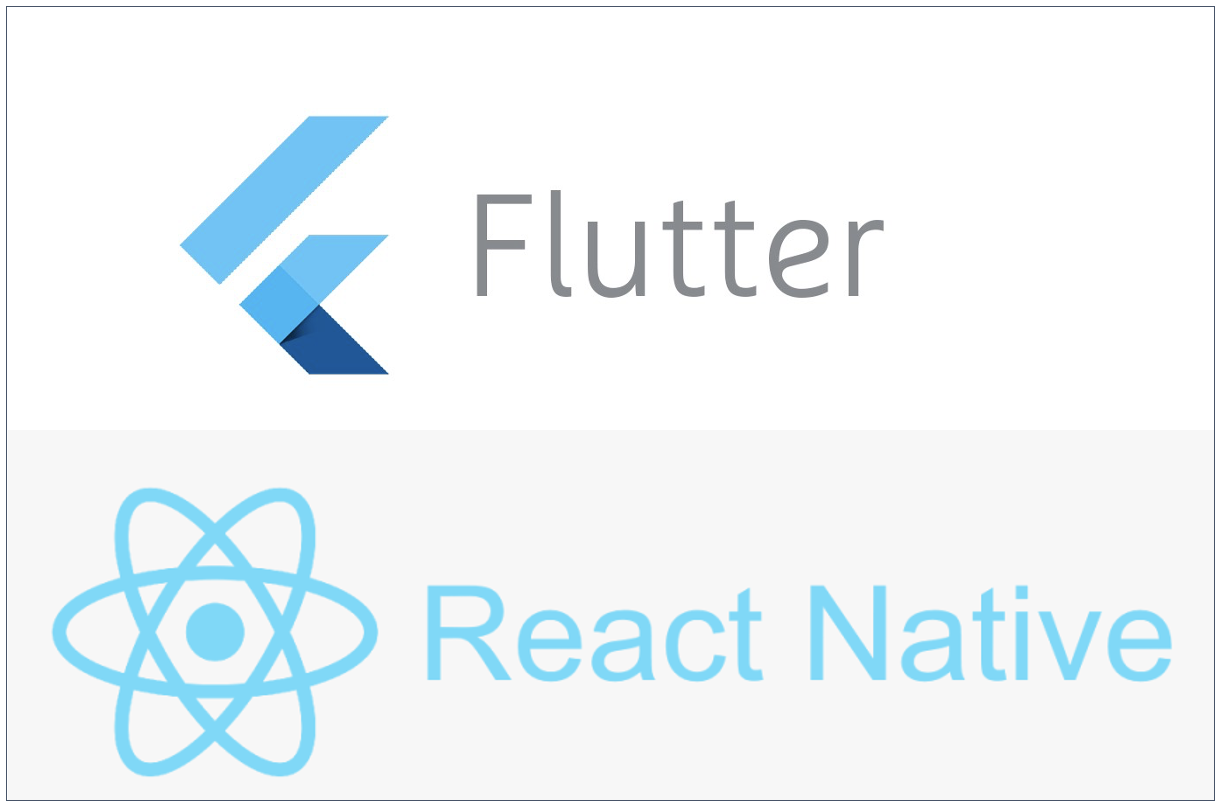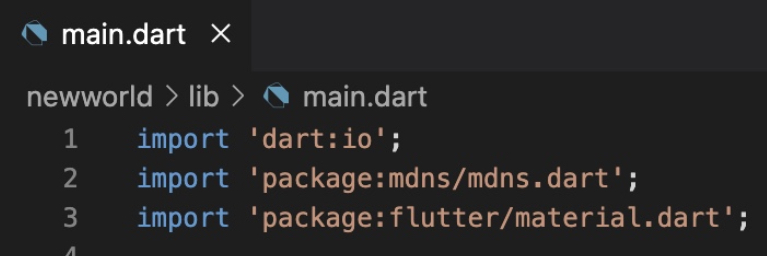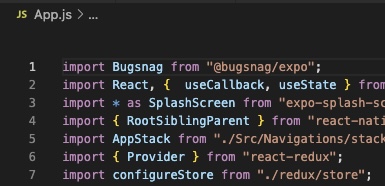Flutter vs. React Native: Which is Better for Your Project?

Flutter and React Native are rapidly being part of the most popular frameworks used for web and mobile development.
Moreover, businesses are now recognizing the importance of having a mobile presence, and as a result, mobile app development frameworks have become an essential component of the development process.
However, Flutter development and React Native projects both have their unique features, advantages, and disadvantages.
So, we’ll take a closer look at these two frameworks and compare them in terms of their features and performance.
By the end of this article, you’ll have a better understanding of which framework is better suited for your project.
Related: Essential Tips for Improving your Web Design
Article Guide:
- What is Flutter?
- Advantages of using Flutter
- Disadvantages of Flutter
- What is React Native?
- Advantages of using React Native
- Disadvantages of using React Native
- Differences between Flutter and React Native
- Bottom line
What is Flutter?
Flutter framework is an open-source mobile application development framework created by Google. It allows developers to build high-performance, natively compiled applications for mobile, web, and desktop platforms from a single codebase.
In addition, Flutter uses the Dart programming language, which is also developed by Google, and provides a reactive programming model based on a widget tree architecture.
Thus, everything in a Flutter app is a widget, from the buttons and text fields to the layout and styling. Also, the widgets in Flutter are designed to be composable, which means that they can be combined and nested together to create complex layouts and interactions.
So, due to its fast development cycle, cross-platform capabilities, and responsive UI, Flutter development has gained popularity among developers. These developers now create apps for a variety of industries, including finance, healthcare, and entertainment, with the help of Flutter.
Advantages of Using Flutter
From all that has been said above, it can be noted that Flutter offers several advantages over other mobile frameworks.
Here are some of the key advantages of using the Flutter framework:
- Fast development
Flutter programming allows developers to create mobile apps for both iOS and Android platforms using a single codebase, which speeds up the development process and reduces costs.
- Hot Reload
One of the unique features of Flutter is the Hot Reload, which allows developers to see the changes in the code instantly in real-time without having to restart the app.
- Beautiful UI
Flutter comes with its own set of pre-built widgets and a flexible design system, allowing developers to create beautiful and responsive UIs that can run on both iOS and Android platforms.
- High-performance
This framework uses a compiled programming language (Dart) and offers high performance by utilizing the GPU to build complex UI designs and animations.
- Easy to learn
The Dart programming language used by Flutter is easy to learn and offers many features that make development faster and more efficient.
- Compatibility
Flutter offers full support for both iOS and Android platforms, and it can also be used to develop web and desktop applications.
Disadvantages of Flutter
While Flutter is a popular and powerful mobile app development framework, it also has a few disadvantages.
Here are some disadvantages of Flutter:
- Limited Libraries
Flutter has a relatively small number of libraries and packages compared to some other popular frameworks like React Native, which can make it more challenging to find ready-made solutions to specific development problems.
- Steep Learning Curve
While Flutter’s syntax is relatively simple, it can still take some time for developers to become proficient in using it, particularly if they are new to Dart, the programming language used by Flutter.
- Limited Community Support
Flutter is still a relatively new framework, and while it has a growing community of developers, it may not have the same level of support and resources as some other more established frameworks.
- Large App Size
Flutter apps can be relatively large, which may make them less suitable for low-end devices or devices with limited storage space.
- Limited Native Functionality
While Flutter provides many built-in widgets, it may not be able to offer the same level of native functionality as some other frameworks, particularly when it comes to more complex features like camera or GPS integration.
- Limited Web Support
Flutter was primarily designed for mobile app development, and while it can be used for web development, it is still a relatively new and less mature option for building web applications compared to other frameworks like React and Vue.
What is React Native?
React Native is an open-source mobile application development framework created by Facebook. It allows developers to use the React framework to build mobile applications for iOS, Android, and other platforms with a single codebase.
Also, React Native platform uses JavaScript and JSX, a syntax extension to JavaScript, to build user interfaces. Native components rather than web components are used as well to render the UI, which results in faster and more responsive apps.
Overall, React Native framework offers a way for developers to create mobile apps that look and feel like native apps, while still being able to write and maintain a single codebase.
Advantages of Using React Native
Some of the advantages of using React Native include:
- Cross-platform compatibility
React Native allows developers to build mobile applications that work seamlessly on both iOS and Android platforms, reducing development time and cost.
- Faster development
Since React Native uses a single codebase for both iOS and Android platforms, developers can write code once and reuse it across multiple platforms, making the development process faster and more efficient.
- Hot Reloading
React Native offers a feature called Hot Reloading, which enables developers to see the changes they make to the code in real time without having to restart the application.
- Large community and ecosystem
React Native has a large and active community of developers and offers a vast array of libraries, tools, and resources that make the development process more accessible and streamlined.
- Better performance
React Native offers better performance compared to other hybrid mobile app development frameworks, as it uses native components, which are faster and more efficient than traditional hybrid mobile app components.
- Easy to learn
React Native is built on top of the React JavaScript library, which is widely used and popular among developers, making it easy for developers to learn and use React Native.
- Code reusability
With React Native, developers can reuse the same codebase across multiple platforms, reducing the amount of time and effort required to develop and maintain mobile applications.
Disadvantages of Using React Native
While React Native is a popular cross-platform framework for mobile app development, it also has its limitations:
- Performance
React Native’s performance may not be as good as native app development, especially for complex and computationally intensive apps.
This is because React Native uses a JavaScript engine to bridge the gap between JavaScript code and native APIs, which can introduce some overhead.
- Limited Native Functionality
React Native setup is designed to be cross-platform, which means that it may not have access to all the native functionality of a specific platform.
This can limit the developer’s ability to create platform-specific features and can lead to less optimized performance.
- Dependency on Facebook
React Native is developed and maintained by Facebook, which means that its development roadmap is subject to Facebook’s priorities.
This can sometimes lead to slower updates and bug fixes, as well as a lack of control over the framework’s direction.
- Learning Curve
While React Native is based on React, it requires additional knowledge and expertise in mobile app development.
This means that developers who are new to mobile app development may face a steeper learning curve.
- Debugging
Debugging React Native apps can be more challenging than native app development due to the use of JavaScript and the various layers of abstraction between code and native APIs.
Hence, this can make it difficult to isolate and fix bugs quickly.
Differences Between Flutter and React Native
From the description of Flutter and React Native above, it can be said that these two are the most popular frameworks used for mobile app development.
Both frameworks allow developers to create cross-platform mobile applications using a single codebase.
However, they both have some differences which might make one preferable to the other. On that note, here are some differences between Flutter and React Native, based on their features and other factors:
- Programming Language
One of the biggest differences between Flutter and React Native is the programming language used to develop the application.
While Flutter code uses the Dart programming language, React Native prefers to use the JavaScript flow.
Dart is an object-oriented, class-based programming language that is easy to learn and has a simple syntax.

JavaScript, on the other hand, is a more complex language that is used widely in web development.

- User Interface
Although both Flutter and React Native allow developers to create beautiful and responsive user interfaces, the approach to creating these user interfaces is different.
Flutter uses a custom rendering engine that allows for fast and smooth animations and transitions.
React Native on its own, uses the native components of the platform, which can sometimes result in a slower and less responsive user interface.
- Architecture
Flutter uses a widget-based architecture, where the user interface is built from small, reusable components called widgets. These widgets can also be arranged in a hierarchical structure to create complex UIs.
React Native, on the other hand, uses a component-based architecture, where components are used to build the UI. These components can be styled and reused across different parts of the application.
- Performance
Flutter is known for its fast and smooth performance, thanks to its custom rendering engine and the use of the Dart programming language.
React Native, on the other hand, is also flexible in terms of performance, but developers may experience slight setbacks, especially when using complex animations and transitions.
- Development Tools
Both Flutter and React Native have their own set of development tools.
For Flutter app development, there is a set of tools that are used, and they’re called Flutter SDK. These tools include the Flutter framework, the Dart programming language, and the Flutter engine.
React Native also comes with a set of tools called Expo, which includes a set of libraries and tools for building and deploying React Native applications.
- Community Support
Both Flutter and React Native have a large and active community of developers.
While Flutter is a relatively new framework that has gained a lot of popularity in recent years, React Native, on the other hand, has been around for longer and has a more established community. This means that there are more resources, libraries, and tools available for React Native developers.
- Platform Support
Flutter and React Native both allow developers to create cross-platform applications for Android and iOS.
However, Flutter also supports desktop and web applications, while React Native only supports mobile applications.
- Learning Curve
Both Flutter and React Native have a learning curve, especially for developers who are new to mobile app development.
However, Flutter is generally considered easier to learn than React Native, thanks to its simple syntax and widget-based architecture.
Bottom Line
Flutter and React Native are two popular frameworks for mobile app development, and both frameworks have their strengths and weaknesses.
Flutter is known for its fast and smooth performance, while React Native has a more established community and can be used to build complex applications.
Ultimately, the choice between Flutter and React Native app development will depend on the project requirements, the skillset of the development team, and the specific needs of the application.
This means that individuals and businesses might need to consult a well-grounded Flutter or React Native app development company to build their applications.
However, we at Spread Solutions have that covered, as we integrate the use of both Flutter and React Native to develop custom-made mobile and web applications for our clients.
Contact us to get started!


Leave a comment: